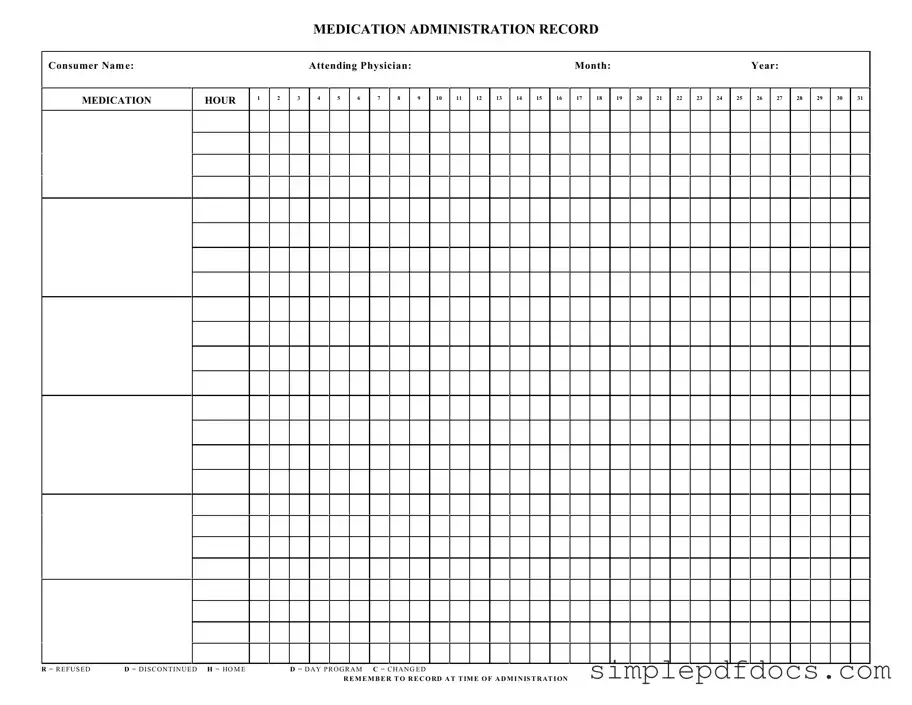The Medication Administration Record Sheet is an essential tool in healthcare settings, designed to ensure the accurate tracking and administration of medications to patients. This form plays a pivotal role in documenting various aspects of medication management, including the consumer's name, the attending physician, and the specific month and year of administration. Each day of the month is clearly laid out, allowing healthcare providers to record the time and details of each medication administered. Notably, the sheet includes designated symbols to indicate specific actions, such as refusal, discontinuation, or changes in medication. This structured approach not only enhances communication among healthcare professionals but also serves as a critical reference for monitoring patient compliance and medication efficacy. By meticulously recording each administration, the form helps safeguard patient safety and ensures adherence to prescribed treatment plans. Furthermore, it emphasizes the importance of timely documentation, urging providers to note details at the time of administration, thereby reducing the risk of errors and improving overall patient care.
